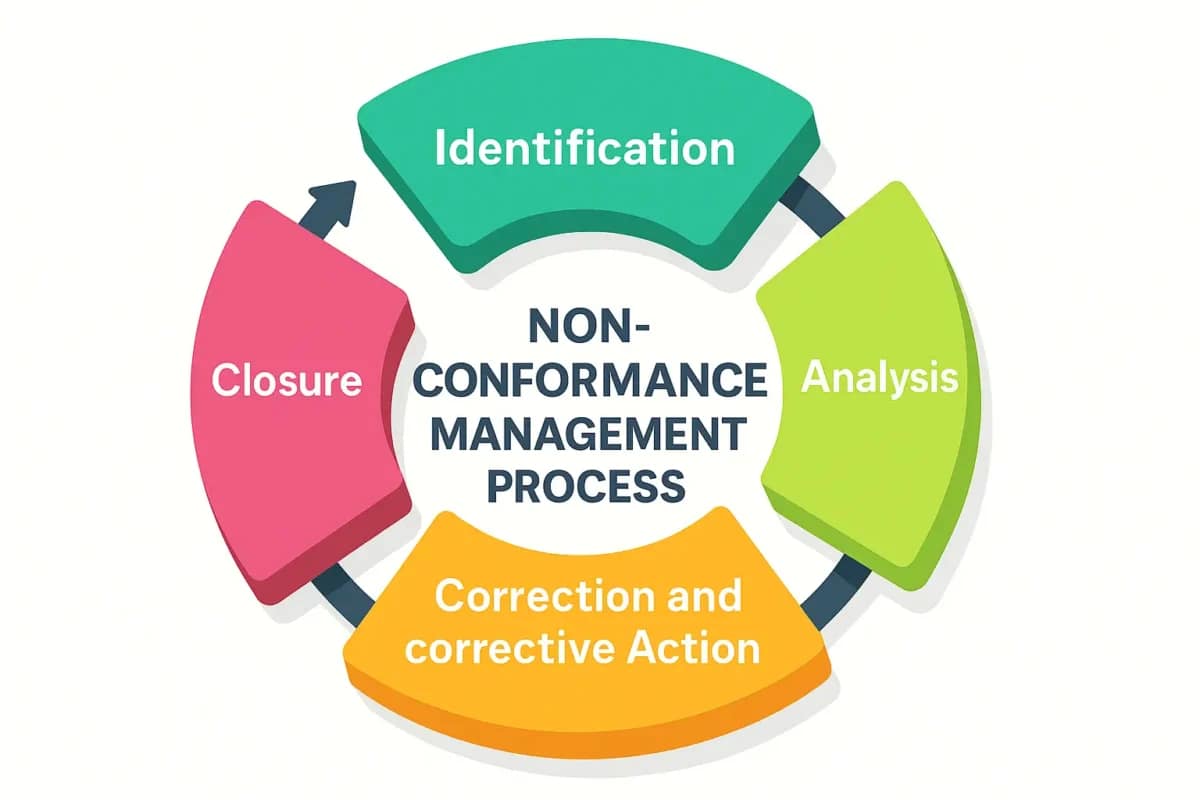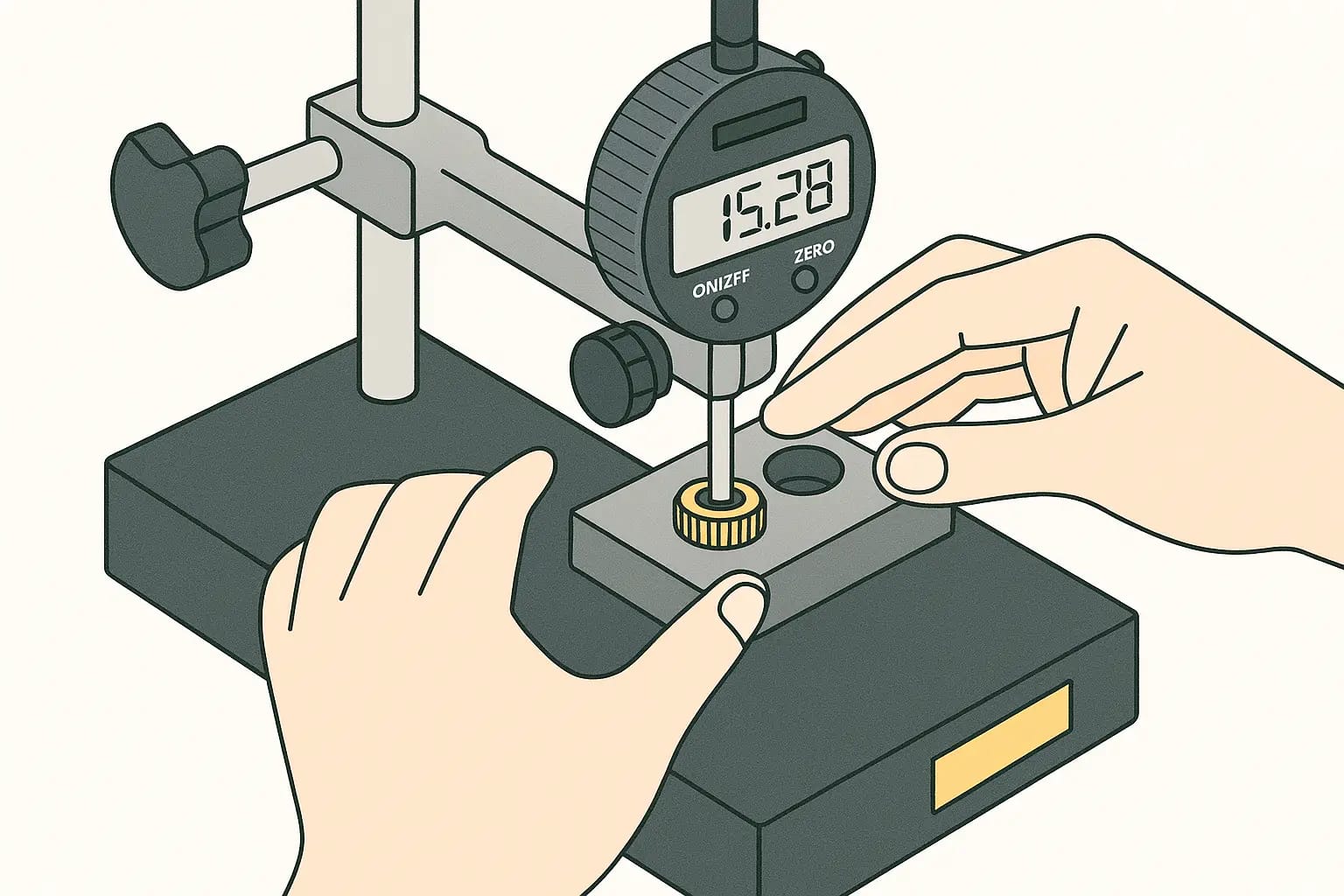
Control of Non-Conforming Material in Automotive Manufacturing
🧭 Introduction
In automotive manufacturing, controlling non-conforming material is essential to prevent defective products from entering the supply chain or reaching the customer. The Control of Non-Conforming material standard from organization outlines a structured approach to identifying, containing, evaluating, and disposing of suspect or non-conforming products. This guide integrates OEM expectations, industry standards (AIAG, VDA), and IATF 16949 to help suppliers implement a compliant and effective control system.
🎯 Purpose
To ensure that suspect or non-conforming products are:
- Identified and documented
- Segregated from conforming material
- Evaluated and disposed of properly
- Prevented from unintended use or installation
- Communicated to all relevant internal and external stakeholders
🌍 Scope
This standard applies to:
- All organization manufacturing and assembly sites
- All stages of design, production, and incoming inspection
- Products from suppliers, subcontractors, and customers
- Products already shipped to customers that are later identified as suspect
👥 Roles & Responsibilities
| Activity | Responsible | Support |
|---|---|---|
| Ensure infrastructure and resources | General Manager | — |
| Define local procedure | Plant Quality Manager | — |
| Escalate per GQS 00 if customer impact exists | General Manager or Assistant GM | — |
📋 Core Requirements
✅ Documentation & Training
- A documented procedure must exist.
- Employees must be trained, with records maintained.
🔍 Identification & Segregation
- Suspect/non-conforming products must be clearly segregated.
- All product containers must be labeled.
- Breakpoints must be defined to separate conforming from non-conforming material.
- Storage and sorting areas must be visibly marked.
- Use red for scrap; red or yellow for blocked inventory.
📎 Reference: Material Identification Standard
🧱 Containment Process
- Use a Containment Worksheet to define all affected areas:
- Internal: machines, fixtures, labs, quality hotels
- External: warehouses, paint, heat treat, sequencers
- Assign a Containment Owner responsible for:
- Execution of containment
- Disposition of suspect material
- Approval of deviations
📎 Reference: Containment Worksheet
📎 Reference: Containment Flowchart
🔁 Rework & Repair Guidelines
- Must be documented using Standardized Work
- Must be approved before starting
- Must be 100% verified using production measurement methods
- If alternate methods are used:
- Conduct an MSA study with acceptable results
- Must have an approved deviation before shipment
📣 Communication & Certification
- Quality Manager must alert all affected customers if containment is incomplete or uncertain.
- Certification of material must confirm it meets print specifications.
- Breakpoints and certification methods must be clearly communicated.
📊 System Integration & Improvement
- Update and link containment actions to:
- D/PFMEA
- Control Plans
- 8D Reports
- Layered or Cross-Functional Process Audits (LPA)
- Containment Quality Gates
- Use these updates to drive systemic improvements and prevent recurrence.
📂 Record Keeping
- Maintain records per local plant procedures, including:
- Completed containment worksheets
- Rework/repair instructions
- Approved deviations
📚 Definitions
| Term | Definition |
|---|---|
| Suspect Product | May or may not meet specifications; requires sorting |
| Non-Conforming Product | Does not meet specifications; unusable unless deviation is approved |
| Sorting | Separating suspect from conforming material |
| Containment | Holding suspect material to prevent unintended use |
| Disposition | Final decision on use or rejection of material |
| Breakpoint | Time or point when only conforming material is used |
| Repair | Restoring product using a different method |
| Rework | Restoring product using the original method |
| Certification | Guarantee that material meets specifications |
🔗 References
- Global Escalation Process
- Incoming Inspection Guideline
- Containment Worksheet
- Material Identification Standard
- Containment Flowchart
- Standardized Work
✅ Summary
Implementing a robust Control of Non-Conforming Material system helps suppliers:
- Prevent defective products from reaching customers
- Improve internal quality control and traceability
- Meet global OEM and industry standards
- Support structured containment, rework, and escalation
📌 Beginner Tip: Treat non-conforming material like a quarantine zone—label it, isolate it, and don’t release it until it’s verified and approved.


